#american hoverfly
Explore tagged Tumblr posts
Text

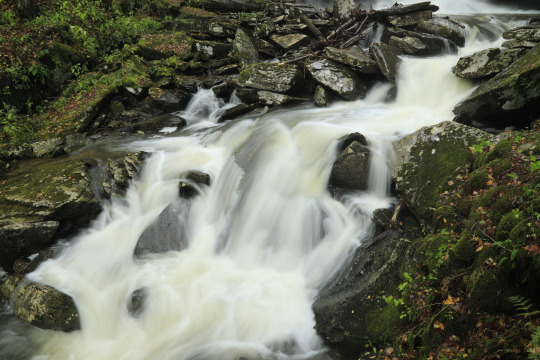
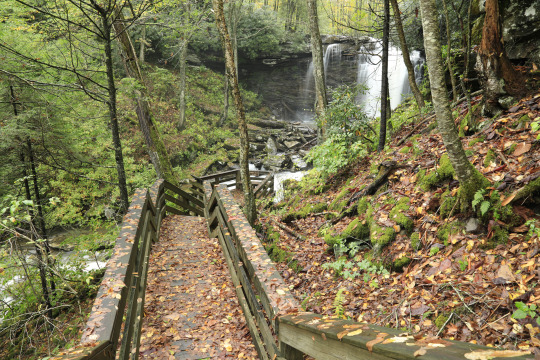
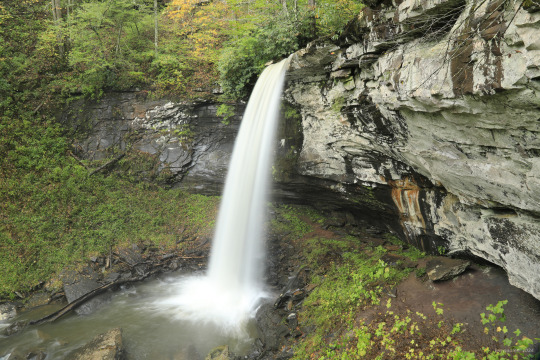
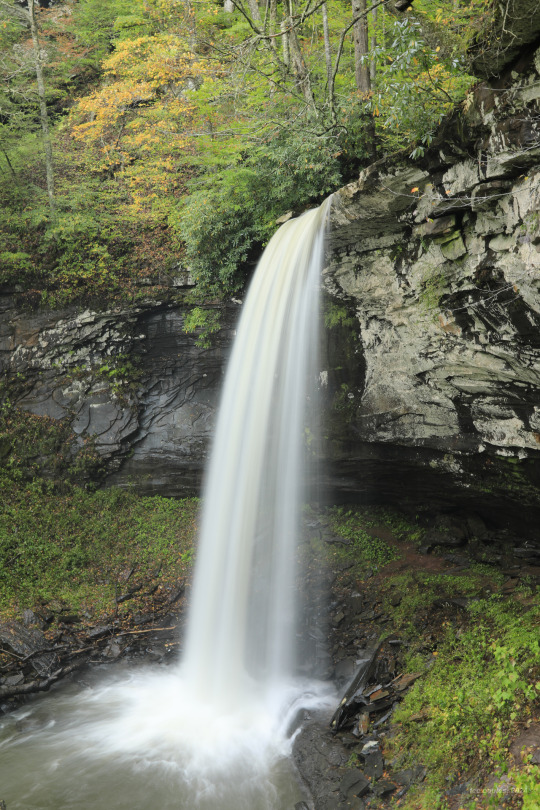
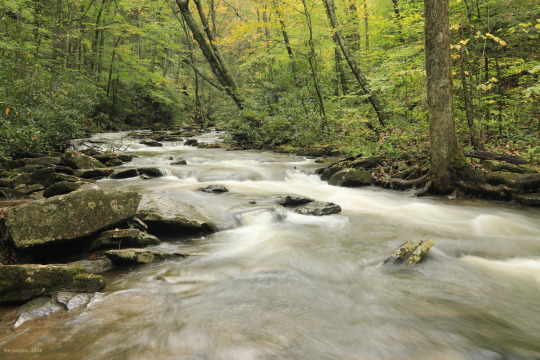
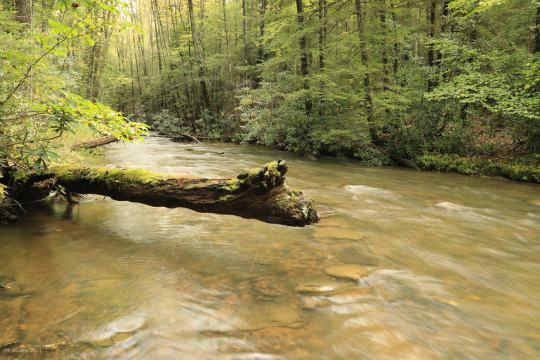
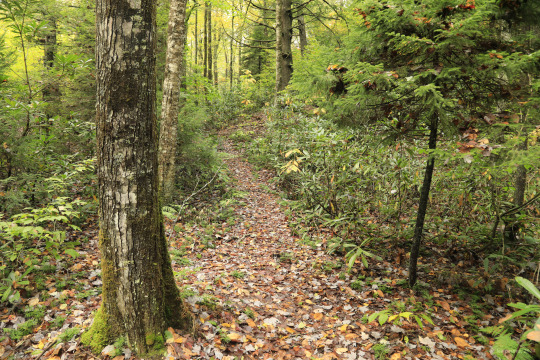
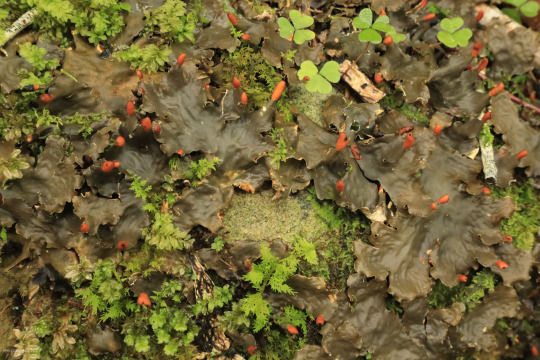
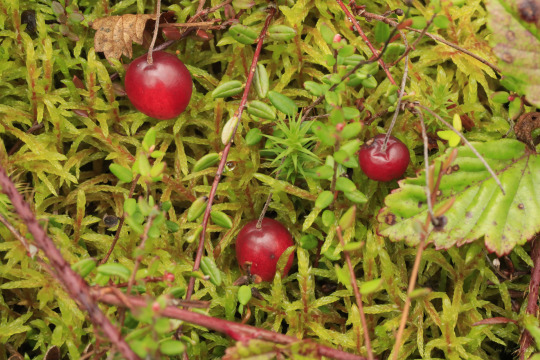








In the shrinking sunlight of early October, life in Central Appalachia's forests and fields shows no signs of slowing down. A proliferation of asters and goldenrods fuels an insect feeding frenzy, at the same time ensuring that a late season eruption of seeds before the first frost will bring new life in the spring. From top: dog tooth lichen (Peltigera canina), also known as felt lichen, whose lobes are tipped by red apothecia ; large cranberries (Vaccinium macrocarpon), which dot wet mountain meadows and bogs; crooked-stemmed aster (Symphyotrichum prenanthoides); brown-eyed Susan (Rudbeckia triloba), which blooms later than black-eyed Susan and has three-lobed basal leaves; a bumblebee (Bombus) taking nectar from purple-stemmed aster (Symphyotrichum puniceum), also known as swamp aster; an American hoverfly (Eupeodes americanus) similarly drinking from purple-stemmed aster; blue wood aster (Symphyotrichum cordifolium); question mark butterfly (Polygonia interrogationis); and wrinkleleaf goldenrod (Solidago rugosa), also known as rough-leaf goldenrod.

#appalachia#vandalia#west virginia#wildflowers#flora#allegheny mountains#fall#autumn#insects#lepidoptera#monongahela national forest#falls of hills creek#cranberry glades#dog tooth lichen#felt lichen#large cranberry#crooked-stemmed aster#purple-stemmed aster#swamp aster#brown-eyed susan#bumblebee#american hoverfly#question mark butterfly#wrinkleleaf goldenrod#roughleaf goldenrod#highland scenic highway#state route 39#state route 150
118 notes
·
View notes
Text

Common Drone Fly (Eristalis tenax)
Family: Hoverfly Family (Syrphidae)
IUCN Conservation Status: Least Concern
Present and abundant on every continent except Antarctica, the Common Drone Fly is one of several hoverfly species that exhibit Batesian mimicry (a form of mimicry in which a harmless species has evolved to mimic the appearance of a toxic or otherwise dangerous species,) with its fluffy body and yellow-and-black striped abdomen giving it a bee-like appearance that deters most would-be predators despite lacking any real defensive abilities itself - upon closer inspection, it can be easily distinguished from a true bee owing to its thick body (bees have a narrow "waist" between their thorax and abdomen,) short, stubby antennae (bees generally have longer, flexible antennae) and wings (bees have 4 overlapping wings, while flies have only two wings.) Feeding on nectar and pollen, males of this species claim small flower-filled areas as their territories and guard them fiercely, hovering in mid-air to survey their surroundings and chasing off any similarly-sized insects that come close. Females travel between these territories searching for food and mates, and after mating they lay clutches of sticky oval-shaped eggs near bodies of water; the larvae, known as rat-tailed maggots, are aquatic and feed on detritus and bacteria, breathing air through an extremely long tail-like structure that extends from their abdomen. After reaching a suitable size and age the larvae crawl onto land and pupate in sheltered areas, and upon reaching adulthood they may live for several years, hibernating in rocky cracks or rotting wood to survive the winter.
--------------------------------------------------------------------------
Image Source: https://www.inaturalist.org/taxa/55719-Eristalis-tenax
#Common Drone Fly#drone fly#fly#flies#hoverfly#insect#insects#zoology#biology#entomology#animal#animals#African wildlife#european wildlife#Asian wildlife#Australian wildlife#North American wildlife#South American wildlife#cosmopolitan wildlife#wildlife
34 notes
·
View notes
Text










Eastern Calligrapher Hoverfly - Toxomerus geminatus
Today, a tiny insect specie returns for a big showcase and a closer look as these individuals navigate the return of spring. When finding these insects in my area, I tend to see them only during spring, but apparently they can be found up until the autumn months. They are small, so they're likely easy to miss alongside other large pollinators, but do keep in mind they also need to grow and metamorphose from their hungry larval form. In that form, this Hoverfly wriggles and lumbers around the flowering plants that the adult placed her eggs upon. It seems that one of the individuals here may have begun the process anew and placed fresh eggs upon a leaf. While uncertain, the yellow specks towards the bottom of the leaf seen in Picture 1 just might be Fly eggs! It's a shame to only find them in hindsight, but sometimes that is the way of things as nature is observed. In any case, the eggs hatch soon after their placement and then wriggle forth in search of he tastiest Aphids and any other nearby soft-bodied arthropods! From other images that I've reviewed, the larvae of this insect specie appear green-colored, and can probably conceal themselves easily as they travel along the leaves. Should this Fly's larvae go unnoticed by predators which rely on vision to find prey, the larvae can comfortably feed and grow within a garden or meadow. After a brief pupation, a Hymenopteran-mimic Hoverfly with finely detailed patterning along its abdomen emerges to fly.
As a mimic of other pollinating insects, it too will visit flowers to obtain food, but in the form of nectar and pollen rather than Aphids. As it interacts with the innards of a flower, the activity grants the flower pollination. This could be crucial so early in the year. How remarkable to know that this specie acts in a beneficial manner to plants throughout its lifecycle. And based on my observations from these pictures, the specie appears to be a generalist as the individuals photographed here have explored an array of plants. Naturally some plants will be more suitable for food and eggs than others, but these Flies can search for cues and signs related to suitability. As they do, they could even bump into other small Hoverfly species. Larger Hoverflies (particularly males) can be become quite territorial over the areas they hover around, but it's not well known if smaller Hoverflies behave the same way. Perhaps observe them if you find them, but be aware of other North American species which resemble them. From my observances, the two most prominent are the Common Oblique Hoverfly (which is fairly distinct from the Eastern Calligrapher) and the Marginated Calligrapher, a close relative. The latter's abdomen patterning has a fine curve to it and the coloration is quite similar, but the curves are broader and not as finely-pointed like those of the Eastern Calligrapher.
Pictures were taken on May 6, 2021 with a Google Pixel 4. Oh, and all individuals photographed here are female Flies. Note their eyes and the presence of a tipped abdomen. However, it's not often one finds an Eastern Calligrapher which folds its wings at rest.
#jonny’s insect catalogue#ontario insect#fly#eastern calligrapher hoverfly#diptera#eastern calligrapher#hoverfly#insect#toronto#may2021#2021#nature#entomology#invertebrates#arthropods#photography#animals
14 notes
·
View notes
Text
February 2nd, 2024


Thick-legged Hoverfly (Syritta pipiens)
Distribution: Native to Europe, but found throughout Eurasia and North America.
Habitat: Occur wherever there are flowers, but most common around human habitations; common habitats include farmland, gardens and parks. Larvae are most common in rotting organic matter such as compost, manure, silage, and occasionally cadavers.
Diet: Larvae feed on decaying organic matter, while adults feed on many types of flowers. Their most common food plants are water-willow, white vervain, American pokeweed and candyleaf.
Description: The thick-legged hoverfly is called so due to their overdeveloped hind legs. These insects can sometimes be pests, as they occasionally feed on ornamentals, but are generally considered beneficial because they pollinate many common flower species. They also act as bio-indicators, especially to demonstrate the effects of environmental changes on pollinators.
Hoverflies are very agile fliers, and are often found hovering near flowers. This species, however, is very rarely found flying more than a metre above ground level. When they encounter another fly, males will sometimes circle around them; if they're male, this often results in the two males circling eachother, and if they're female, the male may dive at her at an acceleration of up to 500 centimetres per second squared in an attempt to initiate copulation.
Images by Joaquim Alves Gaspar and Stephen Luk.
65 notes
·
View notes
Text

U.S. Coast Guard pilot Stewart R. Graham flies a Sikorsky R-4 Hoverfly (Royal Navy serial FT835) in joint British-American shipboard helicopter trials on board the freighter MV Daghestan in the Atlantic. January 1944
35 notes
·
View notes
Note
#3 for the Dekiru sidekicks!
3. What does your oc’s voice sound like? (Or, if you have one, what’s their voiceclaim?) Can they sing, whistle, or roll their rs? Do they have any speech impediments or notable dialects/accents?
Oh boy.
Yuki-onna: Yuri sounds a lot like Raven from Teen Titans (05), in that she has an extremely deadpan delivery and maintains a very strict monotone. She doesn't have any strong accent or particular dialect, being from Tokyo, but she does play into her hero image as a classical beauty by using formal keigo while on the clock in public to make herself look very dignified and poised. The fanboys eat it up and see her as a very elegant woman, but a cold one (who needs them to thaw out).
She can't sing, but she can whistle. She can't even pronounce R's, let alone roll them.
Skarecrow: For as long as I have had Damian I have only ever envisioned him as voiced by Maxey Whitehead. This is a walking ball of anxiety held together by duct tape and the desire to keep playing video games, so the only reasonable way for him to sound is like one of Crona Soul Eater's mental breakdowns. His Japanese contains a notable American accent and he sometimes still struggles a bit with the language, bemoaning the fact it has 3 goddamn alphabets to learn if he wants to become properly fluent. He can't sing, he can whistle, and he can in fact roll his R's because living in LA and growing up Catholic surrounded him with Latinos.
Party Animal: Admittedly. I do not have a strong mental voice for Kouhei. But that's partially because every single time I think of him, 'Party Party Party' by Andrew WK begins to blast like 'Sexyback' does for Duke Devlin. I do know he has a very loud and excited voice, as he is a loud and excitable wolf man. A notable quirk of his speech is that he has the weirdest mishmash of casual dialect and extremely formal speech patterns, befitting a guy who grew up extremely rich before getting cut off and slumming it with the average joes. He's still unlearning some of the automatic keigo that was trained into him as a child.
He can sing, whistle, roll his R's, AND hit insane decibels if asked. Please do not ask him.
Hoverfly: Shinji has a very androgynous voice, and a somewhat raspy one that's a bit weak. He's never had a particularly strong set of lungs on him and it shows. He wears a voice modulator in his mask that makes his voice come out a bit clearer for everyone's benefit, but it makes him sound even younger than he already is. He has an unidentifiable sort of accent to him that no one can place, but is the result of his mother's islander dialect. He doesn't actually know if he can sing. He can't whistle. He can roll his R's, though.
6 notes
·
View notes
Text
#2642 - Melangyna novaezelandiae - Large Hoverfly

First described in 1849 as Syrphus ortas, and again in 1855 as Syrphus novaezelandiae. In 1875, it was described yet again as Syrphus rectus by M. S. Nowicki (although a North American species was given the same name that year). In 1969, it was transferred to Melangyna, and the newly erected subgenus Austrosyrphus. In 2008 Christian Thompson realised that novaezelandiae, ortas, and rectus were the same animal. The species name should traditionally have gone to ortas, the oldest name, but novaezelandiae was already in widespread use.
Sometimes mispelled as Melangyna novaezealandiae.
Widespread throughout New Zealand and as far as the Chatham Islands, in a wide range of habitats. In agricultural areas one of the two most common species of hoverfly.
The adults are generalist pollinators, but the larvae are predators of other arthropods.
Lake Tekapo, Aotearoa New Zealand
2 notes
·
View notes
Text
ok sorry guys im skipping day 5 because i feel like im actually gonna puke (icky sicky) so im turning in early like super early
but let me share with you a thing i was thinking about from the wonka (2023) movie
so from the line where wonka has in his song "you've never had chocolate like this (the hoverchoc version)" (if you haven't/had heard it and want to check it out on youtube or fact check me exactly then it'll show up instantly) he has a line that goes like "these microscopic fleas" while describing the hoverflies meaning that they're quite small whether microscopic is an over exaggeration or it's the honest truth
if we're going off of every word of wonka being the truth, MAN MICROSCOPIC IS SMALL AS SHIT so how the fuck does it make people fly, i mean come on, even if it can "flap its wings a thousand times a second", being "no lie", how the FUCK does those tiny bastards make those people who are like a billion times bigger than them FLOAT like look at this shit (using an old drawing i did back in fucking i don't even know)

even if you compared it to OLIMAR who's like tiny as (something the size of an american quarter) a hoverfly would still be miniscule compared to him! olimar is like the size of the actual chocolate itself! what the fuck?! like if this was in pikmin, i'd say "whoopee" because it makes a little more sense there just a tiny bit but like COME ON
i think the wonka movie may have actually been a work of fiction guys i don't think hoverflies are real
19 notes
·
View notes
Text
Excerpt from this story from This Is Not Cool With Peter Sinclair:
As the Clean Energy Transition progresses, one of the questions most often asked is “How much land will be necessary for development of solar energy?”
An ambitious build out of utility scale solar in Michigan would require about 2.5 percent of our 10 million acres of agricultural land. By comparison, today we devote between 7 and 10 percent of that land to corn ethanol production, which is a much more destructive and less efficient use of that land.
A recent study by Renew Wisconsin showed that, comparing the use of farmland for ethanol or solar, as measured in the potential for EV vs combustion vehicle mileage, showed that “…ethanol used in internal combustion engines requires about 85 times the amount of land to power the same amount of driving as solar-charged electric vehicles.”
For many farmers, clean energy development, solar and wind, represent a financial lifeline to diversify incomes, keep farms in the family and farmers on the land as stewards.
Unlike solar, which protects farmers, and can even enhance farm soil, sprawl will destroy open land essentially forever.
Indeed, my experience is that opponents to solar and wind development across the Midwest almost always include real estate speculators, hungry to see farmers fail so that land can be scooped up for subdivisions, strip malls, gas stations, burger joints, and concrete.
American Farmland Trust, a non-profit with a mission to protect farmland, points out that unbridled sprawl development could result in “24.4 million acres of farmland and ranch land…paved over, fragmented, or compromised by 2040.”
The Trust has published “Smart Solar” guidelines to support, in their words, “three main, equally important goals: (1) accelerating solar energy development, (2) strengthening farm viability, and (3) safeguarding land well-suited for farming and ranching.”
Over and over again, in interviews, what I heard from farmers and landowners is that they did not want to sell their land, but that, by setting aside part of it for wind or solar development, they could keep it economically viable, and save it for future generations (in the case of wind, there is practically no effect on farm production).
A large body of research is emerging that shows the positive effects of solar projects in promoting soil health, supporting pollinators and beneficial insects, and expanding biodiversity. One such study recently came from Argonne National Lab, which followed two solar fields sited on farmland for four years, and found, among other benefits, “…increases in the abundance and diversity of native insect pollinators and agriculturally beneficial insects, which included honeybees, native bees, wasps, hornets, hoverflies, other flies, moths, butterflies and beetles. Flowers and flowering plant species increased as well. Total insect abundance tripled, while native bees showed a 20-fold increase in numbers.”
3 notes
·
View notes
Text
Today's nature findings from the balcony
- House sparrows (two of them are very hard working building their nests in our maple)
- Eurasian collared doves
- American robins
- Black-chinned hummingbirds (at least 3! Not too hot out for them right now)
- Bullock's orioles (a pair! We've never seen them before)
- Lesser goldfinch
- House finch (you're new!)
- Red-tailed hawk (when it soared overhead all the birds stayed quiet and hid. When it left they came back out again, haha)
- California quails and their kiddos (SIX OF THEM. The male was perched on the fence keeping watch while the female and the chicks walked around to eat)
- Barn swallow (also new!)
- Western tiger swallowtail butterfly
- White butterflies I can't identify just yet 😔 they're fast
- Orange belted-bumblebees
- Hoverflies
Good sightings! Now if only the garter snakes would come out again
5 notes
·
View notes
Text

Black shouldered drone fly (Eristalis dimidiata), one of the earliest hoverflies that emerge in the North American spring!
4 notes
·
View notes
Text



Thick-Legged Hoverfly - Syritta pipiens
I've seen many different mimicking insects during my time, but I've never seen one like this before. In fact, I've only seen this specie the one time, and never again after that. Hopefully the future will allow a revisit to this Fly, but all I'll be able to rely on is seeing a new individual perched on a flower or sunning itself on a leaf. This specie's common name is actually shared with another Hoverfly on this blog, that being Tropidia quadrata. It's this type of situation that should help to reinforce why scientific taxonomy and classification is so critical and the flaws in relying on common names. Taxonomy is king when it comes to organization, and helps to convey precise information related to biology in a near-universal manner. Case in point, there may be some differences between our two species of Thick-Legged Hoverflies. Nevertheless, common names have their place, especially if they are appropriately descriptive of an abundant insect. Given the look of this Fly's hindlegs, the name "Thick-Legged" is definitely appropriate. What a large femur (given the size of the other legs)! I'm not sure why the hindlegs of this Fly (and similar species) grow like that, but they may offer a benefit to launching themselves on takeoff or for a more propulsive running speed.
Make sure to observe those legs carefully (not in a crude manner) as they are critical to conclusively identify this pollinating Fly. The femur should be mostly black, with traces/spots of dark orange or yellow. As well, there is a crucial piece of information to account for behind the head: 2 pale-white triangle markings (see Picture 1). Otherwise, identifying this flower-visitor should be simple. What delayed me in uploading this specimen was the abdomen pattern being obscured by the pair of wings, which are strangely folded over the back rather than held out to the side at rest. When comparing against other North American flower Flies, the abdomen's color pattern can be a big help... just don't expect the underside's color to match. Finally, while I've gone on about finding this mimic near flowers, you may also have luck finding this specie near rotting vegetation, compost or near piles of dung. While the adults can take nectar and pollen, their larvae require moist, decaying matter to sustain them to pupation! The source of decomposition needs to be surveyed, and the larvae will also need to be laid inside it. As such, look and observe, but do not touch.
Pictures were taken on June 6, 2020 with a Google Pixel 4. Next week, we will begin by revisiting the family Tephritidae, better known as Fruit Flies.
#jonny’s insect catalogue#ontario insect#fly#thick legged hoverfly#syritta pipiens#hoverfly#diptera#insect#june2020#2020#toronto#nature#entomology#invertebrates#arthropods#photography#animals
5 notes
·
View notes
Text
Memorial Day
We have had this lily for years and it has never bloomed. We finally found a spot where it is happy:

Mason Wasp. They are a two-for-one - pollinator and predator:

Tidying up after feeding:

Full time pest but also part time pollinator:

I dig these tiny bees but they can be tricky to photo:


I like the way this variety of echinacea draws its petals down:

Pulling spent blossoms off our petunia. It tidies up the appearance of the plant but it also seems to stimulate blossom production:

Another echinacea. This one is in a pot on our back patio:

Calla lily:

Plantago rugelii (American Plantain). The reddish-purple on the stem differentiates it from Plantago major (Broadleaf Plantain). Rugelii is native but Major isn’t:

Spent chive blossom revealing tiny black seeds. Not telling where chives will come up next year:

Bee in flight:

Asian lady beetle:


Asian Lady Beetles have a lot of color variation as compared with proper ladybugs. This one is almost completely red:

Asian Lady Beetle having a sup of sugar water from our hummingbird feeder. I think I’ve posted it before and the recipe is all over the Internet but the recipe is 4 parts water to 1 part pure cane sugar:



The Carpenter Bees love our Texas Sage:

Our tomatoes are coming along. The front 3 pots are determinants and the back 3 are indeterminants. Those lighter green plants in the pots with them are volunteer tomatoes from our compost:

Close up of tomato blossoms complete with a filthy aphid. Aphids can’t normally do enough damage to a plant to harm it but they are disease vectors which is where their real harmfulness is:

Unknown variety (at least to me) of hoverfly coming in for a landing on our green onion:

Landing successful:

Update on the compost bin mystery plant. Definitely not a squash. My money is on a pumpkin:

Astilbe blossoms:

Look what I found growing in the compost bin:

Black Soldier Fly in the compost bin. Hopefully, a female laying eggs:

Slug and pillbug buddy:

Tiny bee:

Butterfly bush:

This stand of Monarda is bursting out. The ruby-throated hummingbirds were visiting it at dusk today but light conditions were too poor to get a decent photo of them:

The lemon balm is blooming:

First pole bean to break ground in the backyard garden for 2020:

Female ruby-throated hummingbird in silhouette at dusk:

#garden#gardening#backyard garden#backyard wildlife#vegetable garden#vegetable gardening#herb gardening#asian lady beetle#tomato plants#tomato blossoms#aphid#clematis#flowers#american plantain#plantago rugelii#mystery plant#hoverfly#green onions#astilbe#butterfly bush#lemon balm#lemon balm blossoms#bees#pole bean#calla lily#petunias#echinacea#ruby-throated hummingbird#mason wasp#lily
4 notes
·
View notes
Photo

The Yarrow (Achillea millefolium) is a wildflower found all over Eurasia and North America. This plant attracts pollinators as well as hoverflies, whose larvae feed off insect pests like aphids.
The leaves and flowers have a plethora of uses in herbal medicine in both European and Native American traditions, but surprisingly these claims are not well supported by medical research. The most famous use is to help heal wounds and there are some medical studies suggesting the crushed herb does have antibacterial properties.
In these modern times it’s definitely safer to use sterile dressings and topical antibiotic creams on wounds, but our ancestors used yarrow since their options were limited.
#katia hougaard#katia plant scientist#yarrow#achillea#achillea millefolium#white flowers#pollinators#meadow#summer meadow#fields#wildflowers#wildflower meadow#green#Summer#botany#herbalism#Herbal Medicine#wound healing#cottagecore
14 notes
·
View notes
Text
Obligatory Resident Evil 8 Wing AU
but it’s using my Extremely Detailed wing au
Alcina
She is, of course, a Hydra!
Her wings are pure white and Absolutely Fucking Massive, as they grew with her upon her mutation
Her horns curl around her head like a ram’s
She has firebreath, making her a walking space heater, which her daughters Love
Heisenberg
He is a large flying fox Vesper!

His moon power is telekinesis and he often uses it while making his creations, as it is Very Handy
Donna
She is a boreal owl Avem!

Moreau
He’s an four-spotted chaser!

He can spit boiling acid
Mother Miranda
She’s a raven Avem, of course!

Big ol’ wings
But not as big as Alci’s
Ethan
He’s an American kestrel Avem!

My guy probably gets just wings sliced off constantly but still somehow survives
However, he can’t fly anymore due to constant damage
Fucking good
He doesn’t deserve it
Bela
She’s a ghost bat Vesper-flannel moth Cimex hybrid!


She was originally a Vesper, but became half Cimex after the Cadou was put into her body
She has the power of empathy and often uses this to gauge other people’s emotions towards her, especially her mother’s. She then measures how much better she has to be to live up to their standards
She can also spin silk from her wrists and inject venom through barbs in her claws
Cassandra
She’s a Hydra-great black wasp Cimex hybrid!

Similar to her two sisters, she was originally a Hydra that became a Cimex hybrid after the Cadou
Her scales are a deep indigo blue with dark purple speckles
She can breathe fire, inject venom through wrist barbs, and has venom in her teeth
Daniela
She is a European starling Avem-eastern band-winged hoverfly Cimex hybrid!


Same thing goes for her: originally an Avem that turned into a hybrid after the Cadou
She has projectile feathers and can spray caustic acid from her mouth
#wing au#I have So Much world building for this avian world#resident evil 8#resident evil village#alcina dimitrescu#karl heisenberg#donna beneviento#salvatore moreau#mother miranda#ethan winters#bela dimitrescu#cassandra dimitrescu#daniela dimitrescu
238 notes
·
View notes
Photo

The full book title contains 3777 words and reads as follows: 'The historical development of the Heart i.e. from its formation from Annelida: Clam worm, Seamouse, Lugworm, Megascolex, Tubifex, Pheretima, Freshwater leech, marine leech, land leech. Arthropoda: Ladybird, Krill, Rock Barnacle, Root-headed Barnacle, Copepod, Silverfish, Cairns birdwing, Silver - spotted skipper, Scutigera, Cray fish, Large white, Andonis blue, Camberwell beauty, Tiger swallowtail, Regent skipper, Black – veined white, Green – underside blue, Blue Morpho, Apollo, Guava skipper, Cleopatra, Large copper, Millipede, Orb spider, Black widow spider, Giant crab spider, Wolf spider, Bird – eating spider, Tenebrionid beetle, Green Tiger beetle, African goliath beetle, Scolopendra, Diving beetle, African ground beetle, New guinea weevil, Barnacle, Lobster, Shrimp, Woodlice, Mite, Prawn, Housefly, Butterfly, Monarch butterfly, Peacock butterfly, Honey bee, Fairy shrimp, Horsehoe crab, Tick, Bluebootle, Froghopper, Yellow crazy ant, Water flea, Sea spider, Fiddler crab, Shiny spider crab, Hermit crab, Sail swallowtail, Red admiral, Morpho butterfly, Desert locust, Stephens island weta, Speckled bush cricket, Mole cricket, Dung – beetle, Euthalia ynipardus, Small blues, Termite, Hornet, Mosquito, Garden spider, Tarantula, Desert hairy scorpion, Emperor dragon – fly, Moth, Centipede, Wood ant, Stag beetle, Indian red admiral, Blue admiral, Harvestman, Hoverfly, Shield bug, Assassin bug, Cicada, Coreid bug, Rose aphid, Water – boatman, Wasp, June bug, Large tortoiseshell, Frog beetle, Mexican red – legged tarantula, Paintedlady, Sydney funnelweb spider, Small tortoiseshell, Mountain bumble bee, Trapdoor spider, Jumping spider, Daddy longlegs spider, Orchind bee, Asian carpenter bee, Parasitic bee, House spider, Giant longhorn beetle, Flea, Bedbug Beetle, Cockroach, Scorpion, Spider, Ant, Gnats, Grasshopper, Silver fish, Crab, Great green bush cricket, Elephant hawk – moth. Mollusca: Neomenia, Chaetoderma, Chiton, Lepidopleurus, Apple snail, Sea hare, Sea lemon, Dentalium, Freshwater mussel, Marine mussel, Pearl oyster, Cuttlefish, Giant squid, Chambered fish, Devilfish. Fishes or Pisces: African glass catfish, African lungfish, Aholehole, Airbreathing catfish, Alaska blackfish, Albacore, Alewife, Alfonsino, Algae eater, Alligatorfish, Alligator gar, Amberjack - Seriola dumerili, American sole, Amur pike, Anchovy, Anemonefish, Angelfish, Angler, Angler catfish, Anglerfish, Antarctic cod, Antarctic icefish, Antenna codlet, Arapaima, Archerfish, Arctic char, Armored gurnard, Armored searobin, Armorhead, Armorhead catfish, Armoured catfish, Arowana, Arrowtooth eel, Asian carps, Asiatic glassfish, Atka mackerel, Atlantic Bonito (Sarda sarda), Atlantic cod, Atlantic herring, Atlantic salmon, Atlantic Sharpnose Shark - Rhizoprioltodon terraenovae, Atlantic saury, Atlantic silverside, Australasian salmon, Australian grayling, Australian herring, Australian lungfish, Australian prowfish, Ayu, Baikal oilfish, Bala shark, Ballan wrasse, Bamboo shark, Banded killifish, Bandfish, Banjo, Bangus, Banjo catfish, Bank Sea Bass, Barb, Barbel, Barbeled dragonfish, Barbeled houndshark, Barbel-less catfish, Barfish, Barracuda, Barracudina, Barramundi, Barred danio, Barreleye, Basking shark, Bass, Basslet, Batfish, Bat ray, Beachsalmon, Beaked salmon, Beaked sandfish, Beardfish, Beluga sturgeon, Bengal danio, Betta, Bichir, Bicolor goat fish, Bigeye, , Bighead carp, Bigmouth buffalo, Bigscale, Billfish, Bitterling, Black angelfish, Black bass, Black dragonfish, Blackchin, Blackfin Tuna - Thunnus atlanticus, Blackfish, Black neon tetra, Blacktip reef shark, Black mackerel, Black scalyfin, Black sea bass, Black scabbardfish, Black swallower, Black tetra, Black triggerfish, Bank Sea Bass aka Yellow Sea Bass - Centropristis ocyurus, Bleak, Blenny, Blind goby, Blind shark, Blobfish, Blueline Tilefish, Blowfish, Blue catfish, Blue danio, Blue-redstripe danio, Blueline Tilefish , Blue eye, Bluefin tuna, Bluefish, Bluegill, Blue gourami, Blue shark, Blue triggerfish, Blue whiting, Bluntnose knifefish, Bluntnose minnow, Boafish, Boarfish, Bobtail snipe eel, Bocaccio, Boga, Bombay duck, Bonefish, Bonito, Bonnetmouth, Bonytail chub, Bronze corydoras, Bonytongue, Bowfin, Boxfish, Bramble shark, Bream, Brill, Bristlemouth, Bristlenose catfish, Broadband dogfish, Brook lamprey, Brook trout, Brotula, Brown trout, Buffalo fish, Bullhead, Bullhead shark, Bull shark, Bull trout, Burbot, Bumblebee goby, Buri, Burma danio, Burrowing goby, Butterfish, Butterfly ray, Butterflyfish, California flyingfish, California halibut, Canary rockfish, Candiru, Candlefish, Capelin, Cardinalfish, Cardinal tetra, Carp, Carpetshark, Carpsucker, Catalufa, Catfish, Catla, Cat shark, Cavefish, Celebes rainbowfish, Central mudminnow, Chain pickerel, Channel bass, Channel catfish, Char, Cherry salmon, Chimaera, Chinook salmon, Cherubfish, Chub, Chubsucker, Chum salmon, Cichlid, Cisco, Climbing catfish, Climbing gourami, Climbing perch, Clingfish, Clownfish, Clown loach, Clown triggerfish, Cobbler, Cobia, Cod, Codlet, Codling, Coelacanth, Coffinfish, Coho salmon, Coley, Collared carpetshark, Collared dogfish, Colorado squawfish, Combfish, Combtail gourami, Common carp, Common tunny, Conger eel, Convict blenny, Convict cichlid, Cookie-cutter shark, Coolie loach, Cornetfish, Cowfish, Cownose ray, Cow shark, Crappie, Creek chub, Crestfish, Crevice kelpfish, Croaker, Crocodile icefish, Crocodile shark, Crucian carp, Cuckoo wrasse, Cusk, Cusk-eel, Cutlassfish, Cutthroat eel, Cutthroat trout, Dab, Dace, Desert pupfish, Devario, Devil ray, Dhufish, Discus, Diver: New Zealand sand diver or long-finned sand diver, Dogfish, Dogfish shark, Dogteeth tetra, Dojo loach, Dolly Varden trout, Dolphin fish - Corypaena hippurus, Dorab, Dorado, Dory, Dottyback, Dragonet, Dragonfish, Dragon goby, Driftfish, Driftwood catfish, Drum, Duckbill, Duckbill eel, Dusky grouper, Dusky Shark - Carcharhinus obscurus, Dwarf gourami, Dwarf loach, Eagle ray, Earthworm eel, Eel, Eel cod, Eel-goby, Eelpout, Eeltail catfish, Elasmobranch, Electric catfish, Electric eel, Electric knifefish, Electric ray, Elephant fish, Elephantnose fish, Elver, Ember parrotfish, Emerald catfish, Emperor angelfish, Emperor bream, Escolar, Eucla cod, Eulachon, European chub, European eel, European flounder, European minnow, European perch, False brotula, False cat shark, False moray, Fangtooth, Fathead sculpin, Featherback, Fierasfer, Fire goby, Filefish, Finback cat shark, Fingerfish, Firefish, Flabby whale fish, Flagblenny, Flagfin, Flagfish, Flagtail, Flashlight fish, Flatfish, Flathead, Flathead catfish, Flier, Flounder, Flying gurnard, Flying fish, Footballfish, Forehead brooder, Four-eyed fish, French angelfish, Freshwater eel, Freshwater hatchetfish, Freshwater shark, Frigate mackerel, Frilled shark, Frogfish, Frogmouth catfish, Fusilier fish, Galjoen fis, Ganges shark, Geel, Garibaldi, Garpike, Ghost fish, Ghost flathead, Ghost knifefish, Ghost pipefish, Ghost shark, Ghoul, Giant danio, Giant gourami, Giant sea bass, Gibberfish, Gila trout, Gizzard shad, Glass catfish, Glassfish, Glass knifefish, Glowlight danio, Goatfish, Goblin shark, Goby, Golden dojo, Golden loach, Golden shiner, Golden trout, Goldeye, Goldfish, Gombessa, Goosefish, Gopher rockfish, Gourami, Grass carp, Graveldiver, Grayling, Gray mullet, Gray reef shark, Great white shark, Green swordtail, Greeneye, Greenling, Grenadier, Green spotted puffer, Ground shark, Grouper, Grunion, Grunt, Grunter, Grunt sculpin, Gudgeon, Guitarfish, Gulf menhaden, Gulper eel, Gulper, Gunnel, Guppy, Gurnard, Haddock, Hagfish, Hairtail, Hake, Halfbeak, Halfmoon, Halibut, Halosaur, Hamlet, Hammerhead shark, Hammerjaw, Handfish, Hardhead catfish, Harelip sucker, Hatchetfish, Hawkfish, Herring, Herring smelt, Hickory Shad, Horn shark, Horsefish, Houndshark, Huchen, Humuhumunukunukuapua'a, Hussar, Icefish, Ide, Ilisha, Inanga, Inconnu, Jack, Jackfish, Jack Dempsey, Japanese eel, Javelin, Jawfish, Jellynose fish, Jewelfish, Jewel tetra, Jewfish, John Dory, Kafue pike, Kahawai, Kaluga, Kanyu, Kelp perch, Kelpfish, Killifish, King of the herrings, Kingfish, King-of-the-salmon, Kissing gourami, Knifefish, Knifejaw, Koi, Kokanee, Kokopu, Kuhli loach, Labyrinth fish, Ladyfish, Lake chub, Lake trout, Lake whitefish, Lampfish, Lamprey, Lanternfish, Largemouth bass, Leaffish, Lefteye flounder, Lemon shark, Lemon sole, Lemon tetra, Lenok, Leopard danio, Lightfish, Limia, Lined sole, Ling, Ling cod, Lionfish, Livebearer, Lizardfish, Loach, Loach catfish, Loach goby, Loach minnow, Longfin, Longfin dragonfish, Longfin escolar, Longfin smelt, Long-finned char, Long-finned pike, Longjaw mudsucker, Longneck eel, Longnose chimaera, Longnose dace, Longnose lancetfish, Longnose sucker, Longnose whiptail catfish, Long-whiskered catfish, Loosejaw, Lost River sucker, Louvar, Loweye catfish, Luderick, Luminous hake, Lumpsucker, Lungfish, Mackerel, Mackerel shark, Madtom, Mahi-mahi, Mahseer, Mail-cheeked fish, Mako shark, Mandarinfish, Masu salmon, Medaka, Medusafish, Megamouth shark, Menhaden, Merluccid hake, Mexican golden trout, Midshipman fish, Milkfish,, Minnow, Minnow of the deep, Modoc sucker, Mojarra, Mola, Monkeyface prickleback, Monkfish, Mooneye, Moonfish, Moorish idol, Mora, Moray eel, Morid cod, Morwong, Moses sole, Mosquitofish, Mouthbrooder, Mozambique tilapia, Mrigal, Mud catfish (Mud cat), Mudfish, Mudminnow, Mud minnow, Mudskipper, Mudsucker, Mullet, Mummichog, Murray cod, Muskellunge, Mustache triggerfish, Mustard eel, Naked-back knifefish, Nase, Needlefish, Neon tetra, New World rivuline, New Zealand smelt, Nibble fish, Noodlefish, North American darter, North American freshwater catfish, North Pacific daggertooth, Northern anchovy, Northern clingfish, Northern lampfish, Northern pike, Northern sea robin, Northern squawfish, Northern stargazer, Notothen, Nurseryfish, Nurse shark, Oarfish, Ocean perch, Ocean sunfish, Oceanic whitetip shark, Oilfish, Oldwife, Old World knifefish, Olive flounder, Opah, Opaleye, Orange roughy, Orangespine unicorn fish, Orangestriped triggerfish, Orbicular batfish, Orbicular velvetfish, Oregon chub, Orfe, Oriental loach, Oscar, Owens pupfish, Pacific albacore, Pacific cod, Pacific hake, Pacific herring, Pacific lamprey, Pacific salmo, Pacific saury, Pacific trout, Pacific viperfish, Paddlefish, Pancake batfish, Panga, Paradise fish, Parasitic catfish, Parore, Parrotfish, Peacock flounder, Peamouth, Pearleye, Pearlfish, Pearl danio, Pearl perch, Pelagic cod, Pelican eel, Pelican gulper, Pencil catfish, Pencilfish, Pencilsmelt, Peppered corydoras, Perch, Peters' elephantnose fish, Pickerel, Pigfish, Pike conger, Pike eel, Pike, Pikeblenny, Pikeperch, Pilchard, Pilot fish, Pineapplefish, Pineconefish, Pink salmon, Píntano, Pipefish, Piranha, Pirarucu, Pirate perch, Plaice, Platy, Platyfish, Pleco, Plownose chimaera, Poacher, Pollock, Pomfret, Pompano dolphinfish, Ponyfish, Popeye catalufa, Porbeagle shark, Porcupinefish, Porgy, Port Jackson shark, Powen, Prickleback, Pricklefish, Prickly shark, Prowfish, Pufferfish, Pumpkinseed, Pupfish, Pygmy sunfish, Queen danio, Queen parrotfish, Queen triggerfish, Quillback, Quillfish, Rabbitfish, Raccoon butterfly fish, Ragfish, Rainbow trout, Rainbowfish, Rasbora, Ratfish, Rattail, Ray, Razorback sucker, Razorfish, Red Grouper, Red salmon, Red snapper, Redfin perch, Redfish, Redhorse sucker, Redlip blenny, Redmouth whalefish, Redtooth triggerfish, Red velvetfish, Red whalefish, Reedfish, Reef triggerfish, Remora, Requiem shark, Ribbon eel, Ribbon sawtail fish, Ribbonfish, Rice eel, Ricefish, Ridgehead, Riffle dace, Righteye flounder, Rio Grande perch, River loach, River shark, River stingray, Rivuline, Roach, Roanoke bass, Rock bass, Rock beauty, Rock cod, Rocket danio, Rockfish, Rockling, Rockweed gunnel, Rohu, Ronquil, Roosterfish, Ropefish, Rough scad, Rough sculpin, Roughy, Roundhead, Round herring, Round stingray, Round whitefish, Rudd, Rudderfish, Ruffe, Russian sturgeon, Sábalo, Sabertooth, Saber-toothed blenny, Sabertooth fish, Sablefish, Sacramento blackfish, Sacramento splittail, Sailfin silverside, Sailfish, Salamanderfish, Salmon, Salmon shark, Sandbar shark, Sandburrower, Sand dab, Sand diver, Sand eel, Sandfish, Sand goby, Sand knifefish, Sand lance, Sandperch, Sandroller, Sand stargazer, Sand tiger, Sand tilefish, Sandbar Shark - Carchathinus plumbeus, Sarcastic fringehead, Sardine, Sargassum fish, Sauger, Saury, Sawfishm, Saw shark, Sawtooth eel, Scabbard fish, Scaly dragonfish, Scat, Scissortail rasbora, Scorpionfish, Sculpin, Scup, Sea bass, Sea bream, Sea catfish, Sea chub, Sea devil, Sea dragon, Sea lamprey, Sea raven, Sea snail, Sea toad, Seahorse, Seamoth, Searobin, Sevan trout, Sergeant major, Shad, Shark, Sharksucker, Sharpnose puffer, Sheatfish, Sheepshead, Sheepshead minnow, Shiner, Shortnose chimaera, Shortnose sucker, Shovelnose sturgeon, Shrimpfish, Siamese fighting fish, Sillago, Silver carp, Silver dollar, Silver dory, Silver hake, Silverside, Silvertip tetra, Sind danio, Sixgill ray, Sixgill shark, Skate, Skilfish, Skipjack tuna, Slender mola, Slender snipe eel, Sleeper, Sleeper shark, Slickhead, Slimehead, Slimy mackerel, Slimy sculpin, Slipmouth, Smalleye squaretail, Smalltooth sawfish, Smelt, Smelt-whiting, Smooth dogfish, Snailfish, Snake eel, Snakehead, Snake mackerel, Snapper, Snipe eel, Snipefish, Snoek, Snook, Snubnose eel, Snubnose parasitic eel, Sockeye salmon, Soldierfish, Sole, South American darter, South American lungfish, Southern Dolly Varden, Southern flounder, Southern hake, Southern sandfish, Southern smelt, Spadefish, Spaghetti eel, Spanish mackerel, Spearfish, Speckled trout, Spiderfish, Spikefish, Spinefoot, Spiny basslet, Spiny dogfish, Spiny dwarf catfish, Spiny eel, Spinyfin, Splitfin, Spookfish, Spotted climbing perch, Spotted danio, Spottail Pinfish - Diplodus holbrooki, Sprat, Springfish, Squarehead catfish, Squaretail, Squawfish, Squeaker, Squirrelfish, Staghorn sculpin, Stargazer, Starry flounder, Steelhead, Stickleback, Stingfish, Stingray, Stonecat, Stonefish, Stoneroller minnow, Stream catfish, Striped bass, Striped burrfish, Sturgeon, Sucker, Suckermouth armored catfish, Summer flounder, Sundaland noodlefish,Sunfish, Surf sardine, Surfperch, Surgeonfish, Swallower, Swamp-eel, Swampfish, Sweeper, Swordfish, Swordtail, Tadpole cod, Tadpole fish, Tailor, Taimen, Tang, Tapetail, Tarpon, Tarwhine, Telescopefish, Temperate bass, Temperate perch, Tenpounder, Tenuis, Tetra, Thorny catfish, Thornfish, Threadfin, Threadfin bream, Thread-tail, Three spot gourami, Threespine stickleback, Three-toothed puffer, Thresher shark, Tidewater goby, Tiger barb, Tigerperch, Tiger shark, Tiger shovelnose catfish, Tilapia, Tilefish, Titan triggerfish, Toadfish, Tommy ruff, Tompot blenny, Tonguefish, Tope, Topminnow, Torpedo, Torrent catfish, Torrent fish, Trahira, Treefish, Trevally, Triggerfish, Triplefin blenny, Triplespine, Tripletail, Tripod fish, Trout, Trout cod, Trout-perch, Trumpeter, Trumpetfish, Trunkfish, Tubeblenny, Tube-eye, Tube-snout, Tubeshoulder, Tui chub, Tuna, Turbot, Two spotted goby, Uaru, Unicorn fish, Upside-down catfish, Vanjaram, Velvet belly lanternshark, Velvet catfish, Velvetfish, Vermillion Snapper - Rhomboplites aurorubens, Vimba, Viperfish, Wahoo, Walking catfish, Wallago, Walleye, Walleye Pollock, Walu, Warmouth, Warty angler, Waryfish, Waspfish, Weasel shark, Weatherfish, Weever, Weeverfish, Wels catfish, Whale catfish, Whalefish, Whale shark, Whiff, Whitebait, White croaker, Whitefish, White marlin, White shark, Whitetip reef shark, Whiting, Wobbegong, Wolf-eel, Wolffish, Wolf-herring, Worm eel, Wormfish, Wrasse, Wrymouth, X-ray fish, Yellowback fusilier, Yellowbanded perch, Yellow bass, Yellowedge grouper (Hyporthodus flavolimbatus), Yellow-edged moray, Yellow-eye mullet, Yellowhead jawfish, Yellowfin croaker, Yellowfin cutthroat trout, Yellowfin grouper, Yellowfin Tuna - Thunnus albacares, Yellowfin pike, Yellowfin surgeonfish, Yellowfin tuna, Yellowmargin triggerfish, Yellow moray, Yellow perch, Yellowtail, Yellowtail amberjack, Yellowtail barracuda, Yellowtail clownfish, Yellowtail horse mackerel, Yellowtail kingfish, Yellowtail snapper, Yellow tang, Yellow weaver, Yellowtail catfish, Zander, Zebra bullhead shark, Zebra danio, Zebrafish, Zebra lionfish, Zebra loach, Zebra oto, Zebra pleco, Zebra shark, Zebra tilapia, Zebra turkeyfish, Ziege, Zingel. Amphibians: Frogs and Toads, Painted frogs, Disc tongued frogs, Fire Belly toads, Litter frogs, European Spadefoot toads, Parsley frogs, Tongueless frogs, Clawed frogs, Mexican Burrowing Toad, American spadefoot toads, Screeching frogs, True toads, Glass Frogs, Poison dart frogs, Ghost frogs, Shovelnose frogs, Tree frogs, Sedge frogs, Southern frogs, Narrow-mouthed frogs, Australian ground frogs, True frogs, Moss frogs, Seychelles frog, Giant Salamanders, Asiatic Salamanders, Mole Salamanders, Pacific giant salamanders, Amphiumas, Lungless salamanders, Mudpuppies and Waterdogs, Torrent salamanders, True salamanders and Newts, Sirens, Common caecilians, Fish caecilians, Beaked caecilians. Reptiles: Turtles, common snapping turtles and alligator snapping turtle, pond turtles and box turtles, tortoises, Asian river turtles and allies, pignose turtles, softshell turtles, river turtles, mud turtles, sea turtles, leatherback turtles, tuataras, scaled reptiles, agamas, chameleons, casquehead lizard, iguanas, Madagascar iguanids, collared and leopard lizards, horned lizards, anoles, wood lizards, Neotropical ground lizards, geckos, legless lizards, blind lizards, spinytail Lizards, plated lizards, spectacled lizards, whiptails and tegus, Lacertids, skinks, night lizards, glass lizards, American legless lizards, knob-scaled lizards, gila monsters, earless Monitor lizards, monitor lizards, worm Lizards, shorthead Worm Lizards, two-legged Worm Lizards, snakes, wart snakes, false coral snakes, dwarf pipe snakes, African burrowing asps, stiletto snakes, boas, anacondas, Old World sand boas, Mauritius snakes, Colubrids, typical snakes, Asian pipe snakes, cobras, coral snakes, mambas, sea snakes, Mexican pythons, pythons, dwarf boas, pipe snakes, shield-tailed snakes, vipers, pitvipers, Fae's viper, night adders, pitvipers, rattlesnakes, true vipers, sunbeam snakes, blind snakes, primitive blind snakes, slender blind snakes, thread snakes, blind snakes, typical blind snakes, Crocodiles, alligators, garials. Aves: Ostrich, rheas, cassowaries and emu, kiwis, elephant birds, upland moas, great moas, lesser moas, Tinamous, Australian brush turkey,megapodes, chachalacas, curassows, and guans, Guineafowl, pheasants and allies, New World quail, pheasants and relatives, mihirungs, screamers, magpie-goose, ducks, geese, and swans, grebes, swimming flamingos, flamingos, pigeons and doves, sandgrouse, mesites, Tawny frogmouth, Nightjars, oilbird, potoos, frogmouths, owlet-nightjars, treeswifts, swifts, hummingbird, cuckoos and relatives, turacos and relatives, bustards, hoatzin, cranes and allies, cranes, limpkin, trumpeters, rails and allies, adzebills, finfoots, flufftails, rails and relatives, thick-knees and allies, thick-knees and relatives, sheathbills, Magellanic plover, plover-like waders, golden plovers, ibisbill, oystercatchers, plovers and lapwings, jacana-like waders, painted snipes, Egyptian plover, jacanas, seedsnipes, plains-wanderer, sandpipers and relatives, buttonquail, gulls and allies, coursers and pratincoles, crab-plover, skuas and jaegers, auks and puffins, gulls, skimmers and terns, sunbittern, tropicbirds, penguins, albatrosses, austral storm petrels, northern storm petrels, petrels and relatives, White stork, storks, frigatebirds, boobies and gannets, darters, cormorants and shags, ibises and spoonbills, hamerkop, shoebill, pelicans, herons and relatives, New World vultures, secretarybird, osprey, hawks, eagles, buzzards, harriers, kites and Old World vultures, barn owls, true owls, mousebirds, cuckooroller, trogons and quetzals, hornbills, hoopoe, woodhoopoes, bee-eater, rollers, ground rollers, todies, motmots, Kingfisher, jacamars, puffbirds, African barbets, Asian barbets, toucans, toucan barbets, American barbets, woodpeckers, honeyguides, seriemas, falcons and relatives, kakapo, kea and kakas, cockatoos, African and American parrots, Australasian parrots, Pesquet's parrot, vasa parrots, Pitta cyanea, Lyrebird, New Zealand wrens, suboscines, Old World suboscines, sapayoa, Calyptomenid broadbills, pittas, broadbills, asities, New World suboscines, bronchophones, manakins, cotingas, sharpbills, royal flycatchers and allies, becards and tityras, spadebills, many-colored rush tyrants, mionectine flycatchers, tyrant flycatchers, tracheophones, crescent-chests, gnateaters, antbirds, antpittas, ground antbirds, ovenbirds, oscines, scrub-birds, lyrebirds, bowerbirds, Australasian treecreepers, Australasian wrens, bristlebirds, gerygones and allies, honeyeaters and relatives, Australasian babblers, logrunners, quail-thrushes and jewel-babblers, cuckoo-shrikes, whitehead and allies, sittellas, wattled ploughbills, whipbirds and quail-thrushes, Australo-Papuan bellbirds, crested shriketits, painted berrypeckers, vireos and relatives, whistlers and relatives, Old World orioles, Boatbills, woodswallows and butcherbirds, mottled berryhunter, ioras, bristlehead, bushshrikes and relatives, wattle-eyes and batises, vangas , fantails, silktail, drongo fantail, drongos, blue-capped ifrits, Australian mudnesters, birds-of-paradise, monarch flycatchers, shrikes, jays and crows, berrypeckers, satinbirds, Australasian robins, stitchbird, wattlebirds, rockfowl, rock-jumpers, rail-babbler, fairy warblers, hyliotas, penduline tits, chickadees and true tits, Nicators, bearded reedling, larks, African warblers, cisticolas and relatives, marsh warblers, pygmy wren-babblers, grass warblers, Malagasy warblers, swallows and martins, bulbuls, leaf warblers, bush warblers , Bushtits, true warblers, parrotbills, fulvettas, white-eyes, babblers and relatives, fulvettas, ground babblers, laughing thrushes, kinglets, spotted wren-babblers, Hawaiian honeyeaters, silky-flycatchers, waxwings, Palmchat, hypocolius, wallcreeper, nuthatches, treecreepers, wrens, gnatcatchers, dippers, thrushes and relatives, flycatchers and relatives, oxpeckers, mockingbirds and thrashers, starlings and mynas , sugarbirds, dapplethroat and allies, flowerpeckers, sunbirds, fairy-bluebirds, leafbirds, olive warbler, accentors, pink-tailed bunting, weavers and relatives, whydahs and indigobirds, weaver finches, Old World sparrows, wagtails and pipits, finches and relatives, longspurs, snow buntings, rosy thrush-tanagers, Old World buntings and New World sparrows, American sparrows, palm-tanager and allies, New World blackbirds and New World orioles, Cuban warblers, wood warblers, cardinals, grosbeaks, and New World buntings, tanagers and relatives. MAMMALS: Rat, Bat, Horse, Standardbred, Throughbred, Saddlebred, Arab, Palomino, Australian stock, Appaloosa, Barb, Lippizaner, Mustang, American Shetland, Falabella, Percheron, Shire, Mule, Bullock, Setter, Oxen, Camel, Tiger, Lion, Hyaenas, Leopard, Bear, Cat, Dog, Sheep, Goat, Cow, Cob, Pig, Chamois, Bulldog, Borzoi, Loris, Longspur, Harvest mouse, Spiny – ant eater, Duck – billed platypus, Elephant, Rhinoceros, Tonkinese, Ragdoll, Margay, Tapir, Seal, Sea lion, Walrus, Dolphin, Bactrian camel, Arabian camel, Bushbaby, Burmese cat, Whale, Porpoise, Aardvark, Ape, Monkey, Gorilla, Chimpanzee, Flying Lemur, Hare, Pika, Macaque, Rabbit, Colobus, Antelope, Caribou, Cattle, Deer, Grizzly bear, Hyrax, Armadillo, Porcupine, Hedgehog, Arctic hare, Mole, Shrew, Beaver, Asian black bear, Polar bear, Sloth bear, Spectacled bear, Mouse, Squirrel, Dugong, Moose, Fallow deer, Reindeer, Red deer, Manatee, Egyptian Mau, Scottish fold, Himalayan, Birman, Red squirrel, Hippopotamus, Weasel, Whale, Wither, Blue whale, Sperm whale, Killer whale, Wallaby, Beluga, Baird’s beaked whale, Grey whale, Bryde’s whale, Pygmy right whale, Southern right whale, Seal, Ape, Indri, Aye – aye, Alaskan Malamute, Dobermann, Beagle, Kinkajou, Afgan Hound, Rough Collie, Cardigan Welsh Corgi, Sheepdog, Pointer, Poddle, Weimaraner, Bloodhound, Zebra, Giraffe, Yak, Arctic fox, Polecat, Golden Retriever, Kerry Blue, Prairie dog, Airedale, German spitz, Pekingese, Otter, Shih Tzu, Proboscis monkey, Orang – utan, Red Howler monkey, Spider monkey, Sloth, Koala, Pangolin, Mustelid, Mongoose, Guinea pig, Malayan Porcupine, Naked Mole rat, Capybara, Pallid Gerbil, Brown rat, Somali, Ocicat, Balinese, Bengal, Cymric, Chartreux, Devon Rex, Turkish Angora, Russian Blue, Yellow – necked woodmouse, Hamster, Grey squirrel, Chipmunk, Fox, Blue Longhair, Chinese Pangolin, Blue – cream shorthair, Tortoiseshell and white shorthair, Brown spotted shorthair, Red and white Japanese bobtail, Javanese, Red Persian Longhair, Brown classic tabby maine coon, Lilac angora, Seal point Siamese, Brown and white sphinx, Red classic tabby manx, Vampire bat, Proboscis bat, Franquet’s fruit bat, Bengal Tiger, Horseshoe bat, Noctule bat, Funnel - eared bat, Blue exotic, Foreign lilac oriental shorthair, Boxer, Bay, Cream point colour pointed british shorthair, Abyssinian, Cinnamon silver Cornish rex, Wolverine, Skunk, Human being, Pine marten, Stoat, Chocolate point longhair, Husky, Ant eater, Kangaroo, Gray Mouse Lemur, Musk oxen, Raccoon dogrie, Pasnda, Bouto, Pembroke Welsh corgi, Whippet, Whisker, Indus river dolphin, Franciscana, Sorrel, Finless porpoise, Jerboa, Harbour porpoise, Bottlenose dolphin, Border Collie, Diana Monkey, White – beaked dolphin, Atlantic white – sided dolphin, Bobcat, Alpaca, Aberdeen angus, Lynx, Pacific white – sided dolphin, Rhesus monkey, Irish wolfhound, Baboon, Slivery marmoset, Puma, Ocelot, Norwegian Forest Cat, Basenji, Keeshond, Akita, Samoyed, Briard, Brittaney, Vizsla, Weimaraner, Saluki, Greyhound, Rottweiler, Bullmastiff, Newfoundland, Puli, Bombay, Sphynx, Kangaroo rat, Humpback whale, Red panda, Maltese, Pug, Chihuahua, Papillon, Pomeranian, Schipperke, Aardwolve, Cheetah, Civet, Red – Bellied Lemur, Moustache, Monkey, Yorkshire terrier, German shepherd, Clumber spaniel, Bouvier des Flandres, Belgian sheepdog, Boston terrier, Italian greyhound, Chesapeake Bay retriever, Genet, Musk deer, Bichon fries, Rock Hyrax, Pony, Mink, Mammoth, Mastodon, Giant sloth, Llama, African Elephant, DeBrazza’s Monkey, Siberian Tiger, Hackney Pony, Bonnet Monkey, German wirehaired pointer, Ferret, Jaguar, Dalmatian, Red Bengal Tiger, Badger, Shunk, Skye terrier, Great dane, Grampus, Bandicoot, Wolf, Marmot, Squirrel monkey, Sable, Minke whale, Spectacle porpoise, Opossums, Airedale, Wombat. etc , Ramapithecus, Australopithecus bosei or Paranthropus bosei, Zinjanthopus bosei, Homo – erectus ( Java man, Peking man, Heidelberg man ), Homo – Sapiens ( Neanderthal man, Cro – Magnon man) to the modern humans with their development and structure of their Heart, their contributions to the formation of the modern humans. What is the origin of the heart? In which place the heart is situated? What is the weight of our (modern humans) heart? Can a person live without a heart? What is the function of the heart? How heart pumps blood to the body? What type of circulation takes place in the human heart? How big our human heart is? Why is our (modern humans) heart considered as the most developed in the world? Why does heart stop? What are heart sounds? What are the types of heart sounds? What causes the heart sounds heard with a stethoscope? What is the anatomy of the heart? Why heart is considered an important organ in the body? Why can’t people live if heartbeat stops? Where is heart located in? How many chambers are present in the heart? What is the number of heart beats per minute? What is the amount of blood pumped by heart? How much blood does the human heart pump in a lifetime? And Short notes on heart attack i.e. what is the definition of a heart attack? Why does a heart attack occur? What are the types of the heart attack? What happens if human get a heart attack? What are the symptoms of Heart attack? What are the causes of the Heart attack? What are the risk factors related to the Heart attack? What are the types of risk factors cause the Heart attack? What are the complications of a Heart attack? What types of diagnosis useful in detecting and treating a heart attack? What treatment is needed to treat heart attack patients? What are 5 strategies to be maintained after the heart attack? What to do after recovery from a heart attack? What is cardiac rehabilitation? Why cardiac rehabilitation is needed to heart attack patients? Does cardiac rehabilitation create positive effects? What are a lifestyle and home remedies are to be maintained? What type of coping and support should be given to heart attack patients? What are the immediate measures should be taken when you encounter an emergency of heart attack patient? What signs and symptoms list should be made to consult a doctor? What is a widow maker heart attack? What is the definition of a widowmaker heart attack? What are the symptoms of Widowmaker heart attack? What are the causes of Widowmaker heart attack? What are the risk factors related to Widowmaker heart attack? What are the complications of a widowmaker heart attack? What types of diagnosis useful in detecting and treating a widowmaker heart attack? What treatment is needed to treat heart attack patients? How to make over your lifestyle? What type of measures should be taken to stay away from a heart attack? What are 20 types of foods should be taken to keep your heart healthy? Solutions and answers of above questions, material and topics are included and cleared in this book.'
26 notes
·
View notes